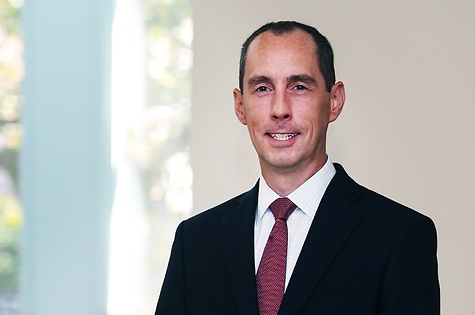Additional Guidance for Self-Employed Individuals and Partnerships Under the Paycheck Protection Program
On April 14, 2020 the Small Business Administration (“SBA”) issued an interim final rule (the “Rule”) containing additional guidance for self-employed individuals and partnerships applying for loans under the Paycheck Protection Program (“PPP Loans”).
The SBA’s Rule (which can be found here) provides specific guidance on (i) calculating the maximum loan amount for individuals with self-employment income who file a Form 1040, Schedule C, and (ii) the treatment of self-employment income of partners in a partnership (including multi-member limited liability companies taxed as partnerships).
Pursuant to the Rule, self-employment income of partners in a partnership may be treated as a payroll cost, up to $100,000 annualized per partner, on the partnership’s PPP Loan application. Individual partners may not submit a separate PPP Loan application as self-employed individuals. Only sole proprietors, sole members of limited liability companies, and independent contractors may apply for a PPP Loan as self-employed individuals. Additionally, these self-employed individuals must have been in operation on February 15, 2020, maintained a principal residence in the United States, and filed (or will file) a Form 1040, Schedule C, for 2019.
Self-employed individuals must calculate the maximum PPP Loan amount for which they are eligible based on one of two methods, depending upon whether they employ others.
If a self-employed individual does not employ others, such individual must calculate the maximum PPP Loan amount as follows:
1. Take the net profit amount from line 31 on the 2019 Form 1040 Schedule C line 31. If this amount is over $100,000, it must be reduced to $100,000. If this amount is zero or less, such individual is not eligible for a PPP Loan.
2. Divide the amount from step 1 by 12 to calculate the average monthly net profit amount.
3. Multiply the average monthly net profit amount from step 2 by 2.5.
4. Add the outstanding amount of any Economic Injury Disaster Loan (“EIDL”) made between January 31, 2020 and April 3, 2020 that such individual is seeking to refinance, less the amount of any advance under an EIDL.
If a self-employed individual does employ others, such individual must calculate the maximum PPP Loan amount as follows:
1. Compute 2019 payroll by adding the following:
a. the net profit amount from line 31 on the 2019 Form 1040 Schedule C line 31, up to $100,000 annualized. If this amount is over $100,000, it must be reduced to $100,000. If this amount is less than zero, it must be set at zero;
b. 2019 gross wages and tips paid to employees whose principal place of residence is in the United States computed using 2019 IRS Form 941 Taxable Medicare wages & tips (line 5c- column 1) from each quarter plus any pre-tax employee contributions for health insurance or other fringe benefits excluded from taxable Medicare wages & tips; subtract any amounts paid to any individual employee in excess of $100,000 annualized and any amounts paid to any employee whose principal place of residence is outside the United States; and
c. 2019 employer health insurance contributions (health insurance component of Form 1040 Schedule C line 14), retirement contributions (Form 1040 Schedule C line 19), and state and local taxes assessed on employee compensation (primarily under state laws commonly referred to as the State Unemployment Tax Act or SUTA from state quarterly wage reporting forms).
2. Divide the amount from step 1 by 12 to calculate the average monthly amount.
3. Multiply the average monthly amount from Step 2 by 2.5.
4. Add the outstanding amount of any EIDL made between January 31, 2020 and April 3, 2020 that such individual is seeking to refinance, less the amount of any advance under the EIDL.
Lastly, the SBA’s Rule provides clarification on PPP Loan forgiveness for self-employed individuals. A PPP Loan may be forgiven, up to the full principal amount of the Loan plus accrued interest, based on the total amount spent over the eight-week period after loan origination on the following costs:
1. payroll costs including salary, wages, and tips, up to $100,000 of annualized pay per employee (for eight weeks, a maximum of $15,385 per individual), as well as covered benefits for employees (but not owners), including health care expenses, retirement contributions, and state taxes imposed on employee payroll paid by the employer (such as unemployment insurance premiums);
2. owner compensation replacement, calculated based on 2019 net profit as described above, with forgiveness of such amounts limited to eight weeks’ worth (8/52) of 2019 net profit, but excluding any qualified sick leave equivalent amount for which a credit is claimed under section 7002 of the Families First Coronavirus Response Act (FFCRA) or qualified family leave equivalent amount for which a credit is claimed under section 7004 of the FFCRA;
3. payments of interest on mortgage obligations on real or personal property incurred before February 15, 2020, to the extent they are deductible on Form 1040 Schedule C;
4. rent payments on lease agreements in force before February 15, 2020, to the extent they are deductible on Form 1040 Schedule C; and
5. utility payments under service agreements dated before February 15, 2020 to the extent they are deductible on Form 1040 Schedule C.
It is expected that the SBA will continue to issue further guidance and rulemaking on the PPP Loan program. We will continue to provide updates as details become available.
Please contact us with any questions. For additional articles about the Paycheck Protection Program please visit our Newsroom.
Practice Areas
Attorneys
- Principal

